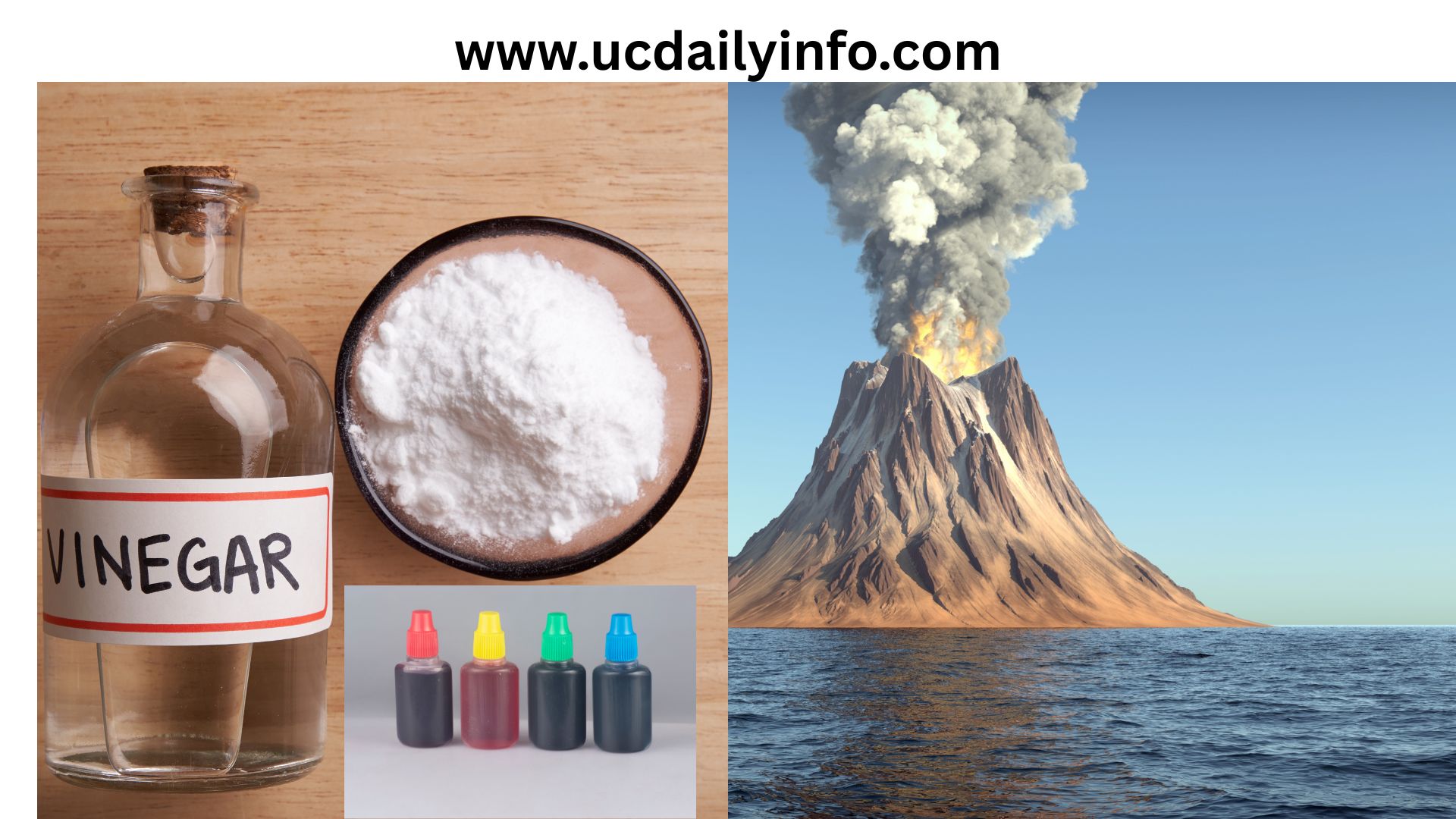Quick Kitchen Science Experiments With 3 Ingredients
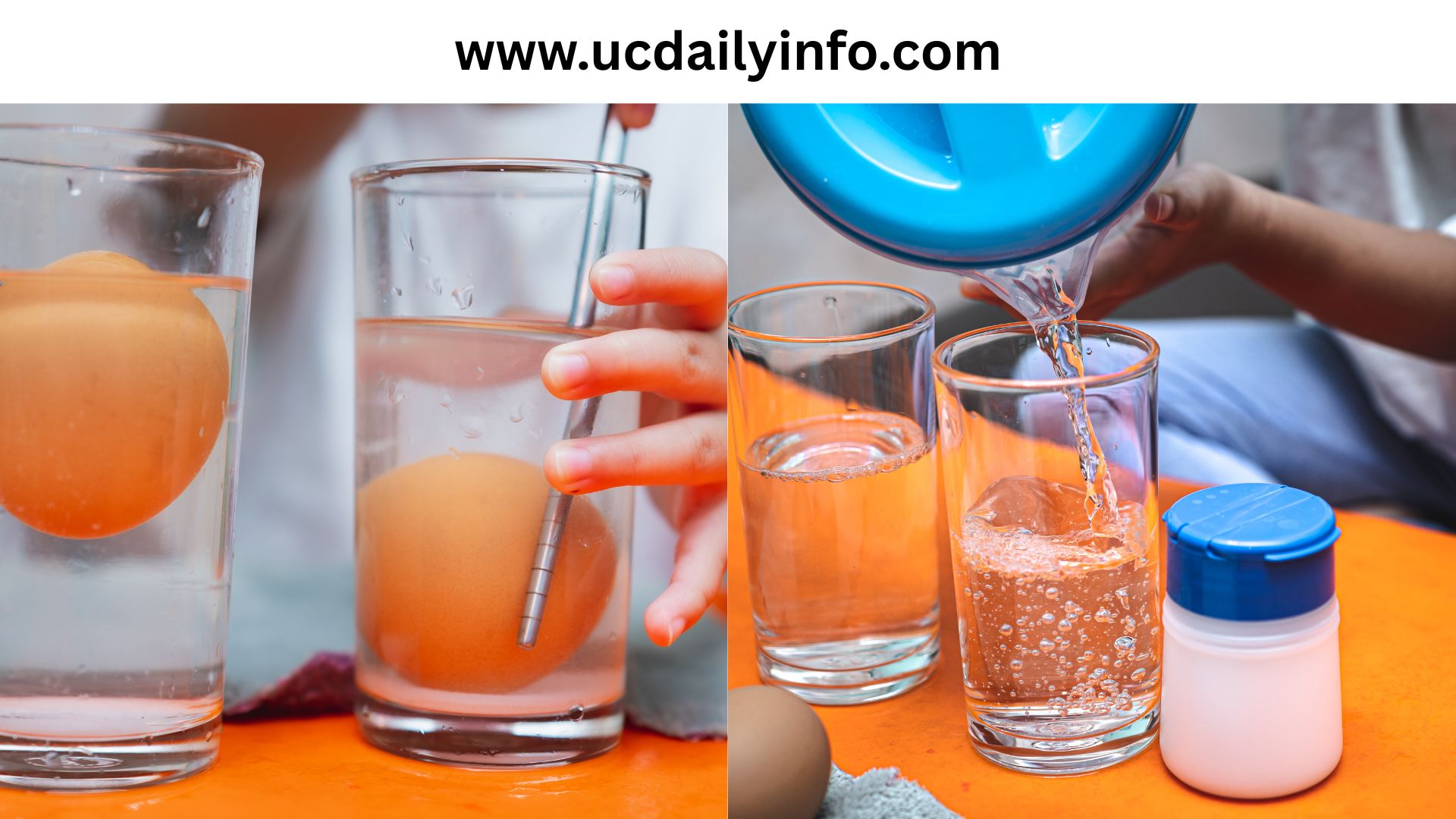
Science doesn’t have to be complicated; in fact, some of the most exciting experiments can be done right in your kitchen! Kids naturally love hands-on activities, and simple experiments spark their curiosity while keeping them entertained.
What makes 3-ingredient kitchen experiments so special is how easy and budget-friendly they are. You don’t need fancy lab equipment or expensive kits, just a few everyday items like baking soda, vinegar, or food coloring. That means less stress for parents and more fun for kids.
Best of all, these quick experiments are more than just playtimes. Each activity helps children learn about basic science concepts like chemical reactions, density, and colors, all while having fun. With a little supervision, your kitchen can turn into a mini science lab that combines fun, creativity, and learning.
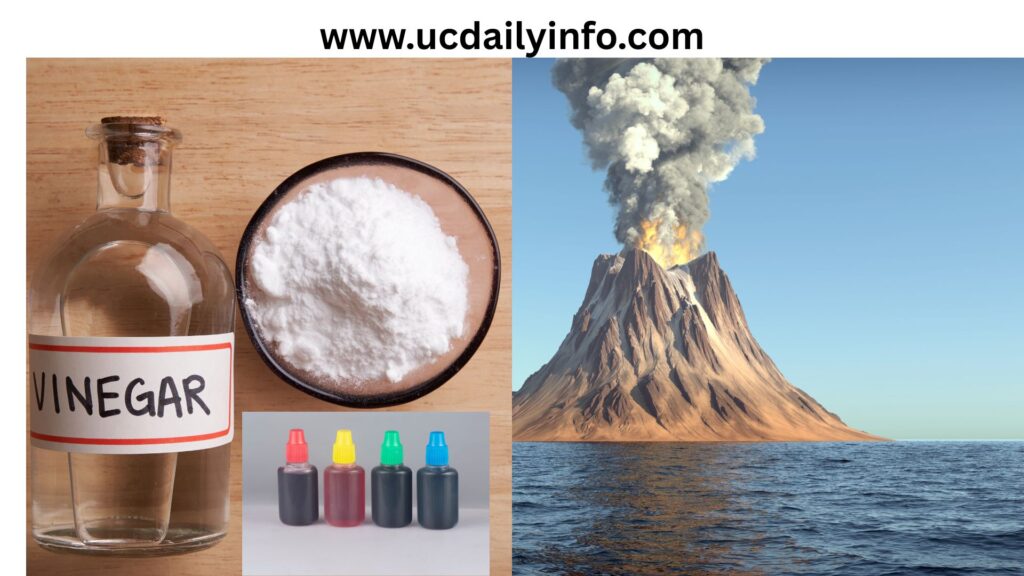
Why 3-Ingredient Experiments Are Perfect for Kids
When it comes to kids’ activities, the simpler the setup, the better. That’s what makes 3-ingredient science experiments so perfect, they’re easy to prepare, safe, and endlessly fun. Here are a few reasons why parents and children love them:
-
Easy Setup for Busy Parents (Quick Kitchen Science Experiments With 3 Ingredients)
No need to hunt down special supplies or order pricey kits online. Most of the ingredients are already in your pantry, things like vinegar, baking soda, or food coloring. This makes it quick and hassle-free to set up a science activity anytime.
-
Budget-Friendly Learning (Quick Kitchen Science Experiments With 3 Ingredients)
raising kids is expensive, but learning doesn’t have to be. With just three simple ingredients, you can create exciting experiments that spark curiosity without spending extra money.
-
Safe and Kid-Friendly
because the experiments use common household items, they’re generally safe for little hands (with supervision). Parents can relax knowing they’re not working with harsh chemicals.
-
Short Attention Span Approved
Young kids often lose focus quickly. These experiments are fast to set up and deliver instant “wow” results, keeping children engaged and excited from start to finish.
-
Learning Made Fun
From fizzing volcanoes to colorful explosions, kids get to see science come to life. It’s a playful way to introduce big ideas like reactions, density, and cause-and-effect without feeling like a classroom lesson.
Safety Tips before You Start (Quick Kitchen Science Experiments With 3 Ingredients)
While 3-ingredient kitchen experiments are generally safe and fun, it’s always important to keep safety in mind, especially when kids are involved. A few simple precautions can make the experience worry-free and enjoyable for everyone.
-
Always Supervise Young Children
Even though the ingredients are common household items, little ones should never handle them alone. An adult should guide the setup, pouring, or mixing to prevent spills or accidents.
-
Use Safe, Non-Toxic Ingredients
Stick to everyday kitchen staples like vinegar, baking soda, dish soap, or food coloring. Avoid any chemicals or materials not meant for children.
-
Protect Surfaces and Clothing
Some experiments can bubble, fizz, or stain. Cover your workspace with newspaper or a tray and have kids wear old clothes or an apron to avoid messes.
-
Watch Out for Allergies
If your child has food allergies or skin sensitivities, double-check the ingredients before starting. For example, some kids may react to food dyes or certain soaps.
-
Teach Safe Habits
Use experiments as a chance to teach kids about safety rules: don’t taste ingredients, wash hands after activities, and clean up properly when finished.
By keeping these safety tips in mind, you can turn your kitchen into a mini-lab that’s not only fun but also safe for curious little scientists.
Fun 3-Ingredient Science Experiments to Try
You don’t need a science lab to spark excitement, just three simple ingredients and curious kids! Here are some quick, safe, and entertaining experiments you can try right in your kitchen.
-
Baking Soda + Vinegar + Food Coloring → Volcano Eruption
 What You Need: A small cup or bottle, baking soda, vinegar, and food coloring.
What You Need: A small cup or bottle, baking soda, vinegar, and food coloring.
How to Do It: Place baking soda in the container; add a few drops of food coloring, then pour in vinegar. Watch the bubbly “lava” erupt!
What Kids Learn: This experiment shows how an acid (vinegar) reacts with a base (baking soda) to create carbon dioxide gas. -
Milk + Food Coloring + Dish Soap → Color Explosion
 What You Need: A shallow dish of milk, food coloring, and dish soap.
What You Need: A shallow dish of milk, food coloring, and dish soap.
How to Do It: Drop different colors into the milk, then dip a cotton swab in dish soap and touch the surface. The colors instantly swirl and explode.
What Kids Learn: This demonstrates how soap breaks down fat molecules in milk while pushing the colors around, a fun way to explore chemistry.
-
Water + Oil + Salt → Mini Lava Lamp (Quick Kitchen Science Experiments With 3 Ingredients)
 What You Need: A clear glass, water, cooking oil, and salt.
What You Need: A clear glass, water, cooking oil, and salt.
How to Do It: Fill the glass mostly with oil, then add water. Sprinkle in some salt and watch the blobs of water move up and down like a lava lamp.
What Kids Learn: This shows density differences between liquids and how salt interacts with oil and water. -
Sugar + Water + String → Homemade Rock Candy (Quick Kitchen Science Experiments With 3 Ingredients)
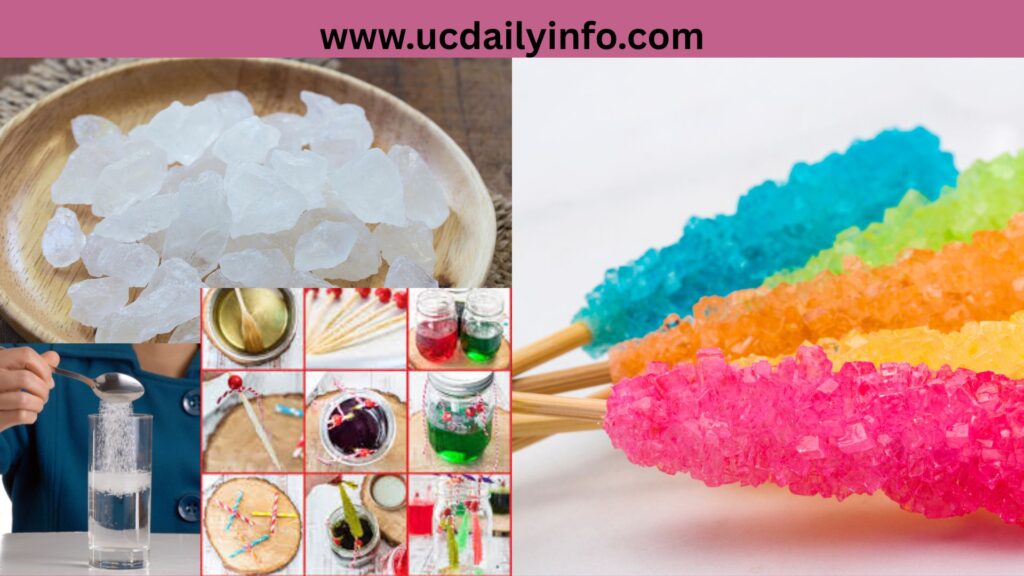 What You Need: Hot water, sugar, and a piece of string tied to a pencil.
What You Need: Hot water, sugar, and a piece of string tied to a pencil.
How to Do It: Dissolve sugar in hot water until it won’t dissolve anymore. Pour the solution into a jar and hang the string inside. Leave it for a few days and watch crystals form.
What Kids Learn: This introduces crystallization and how molecules arrange themselves as water evaporates. -
Balloon + Vinegar + Baking Soda → Self-Inflating Balloon
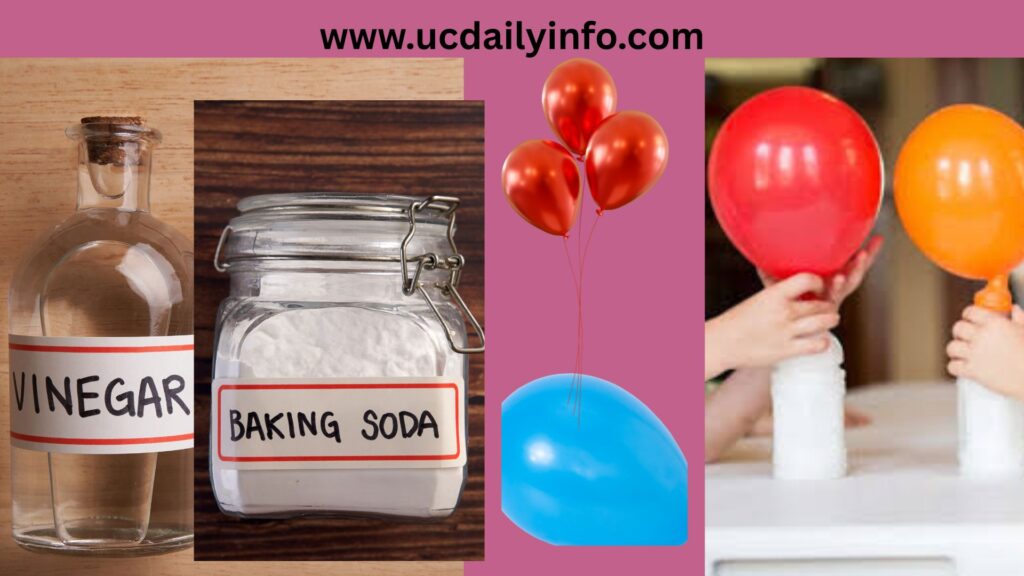 What You Need: A balloon, vinegar, and baking soda.
What You Need: A balloon, vinegar, and baking soda.
How to Do It: Pour vinegar into a bottle. Put baking soda inside a balloon, and then carefully attach the balloon to the bottle’s neck. Lift the balloon so the baking soda falls in, and watch the balloon inflate on its own!
What Kids Learn: The chemical reaction produces carbon dioxide gas, which fills the balloon.
These experiments are quick to set up, fun to watch and double as little science lessons those kids will remember long after the activity ends.
What Kids Can Learn From These Experiments
(Quick Kitchen Science Experiments With 3 Ingredients)
At first glance, these 3-ingredient experiments might just look like messy fun, but behind the fizz, colors, and bubbles, kids are absorbing valuable lessons. Here’s what they gain from each activity:
-
Hands-On Science Concepts
Children see abstract ideas like chemical reactions, density, and crystallization come to life. Instead of just hearing about science, they experience it in action.
-
Curiosity and Problem-Solving
when kids ask “why did that happen?” or try the experiment again with a twist, they’re learning how to think critically and test ideas, just like real scientists.
-
Creativity and Imagination
Color explosions and bubbling volcanoes encourage kids to explore, make predictions, and use their imagination to connect learning with play.
-
Patience and Observation Skills
Some experiments, like rock candy, take days to complete. This teaches kids the value of waiting, observing, and tracking changes over time.
-
Confidence through Discovery
completing an experiment and seeing results boosts self-confidence. Kids feel proud of their “mini-lab” achievements and become more open to exploring new activities.
In short, these experiments aren’t just fun distractions; they’re powerful tools to nurture curiosity, creativity, and a lifelong love for learning.
Tips to Make It More Fun (Quick Kitchen Science Experiments With 3 Ingredients)
Science is exciting on its own, but a few simple tweaks can make these experiments even more engaging for kids. Try these tips to turn learning time into unforgettable fun:
-
Add a Storyline
Instead of just mixing ingredients, turn it into an adventure. Pretend your child is a scientist, wizard, or explorer on a mission. For example, the vinegar-and-baking-soda volcano becomes “an erupting mountain in Dinosaur Land.”
-
Play With Colors (Quick Kitchen Science Experiments With 3 Ingredients)
Use different food coloring to create rainbow eruptions, colorful lava lamps, or even themed experiments (like red and green for Christmas, orange and black for Halloween).
-
Let Kids Predict Results
Before starting, ask: “What do you think will happen?” This builds excitement and helps kids practice critical thinking.
-
Experiment With Variations
Try changing amounts (more baking soda, less vinegar) or swapping containers (small vs. large jars) to see how the results differ. Kids love comparing outcomes.
-
Make It Interactive (Quick Kitchen Science Experiments With 3 Ingredients)
Give kids small tasks, pouring, sprinkling, or stirring, so they feel like true scientists. The hands-on involvement makes it more memorable.
-
Celebrate the Results (Quick Kitchen Science Experiments With 3 Ingredients)
Take photos, record short videos, or create a “science journal” where kids can draw what they saw. It turns learning into a keepsake and motivates them to try more experiments.
With these playful twists, your kitchen science projects become more than experiments, they turn into magical, creative experiences your kids will want to repeat again and again.
Quick Kitchen Science Experiments With 3 Ingredients

Science doesn’t have to be complicated or expensive to be exciting. With just three simple ingredients, you can spark curiosity, laughter, and learning right at your kitchen table. From fizzing volcanoes to colorful milk explosions, these quick experiments prove that everyday items can unlock big discoveries.
Not only do kids get to see science in action, but they also build confidence, creativity, and critical thinking skills along the way. And the best part? These activities are fun for the whole family, turning ordinary afternoons into memorable learning adventures.
So grab those ingredients, roll up your sleeves, and let your kitchen become a mini science lab. Who knows? Today’s fun experiment could inspire tomorrow’s little scientist.
You may Like:
Educational Learning Tablet for Kids
How to Teach Your Kids to Ride a Tricycle
Safe & Comfortable Baby Carriers from Newborn to 2 Years
